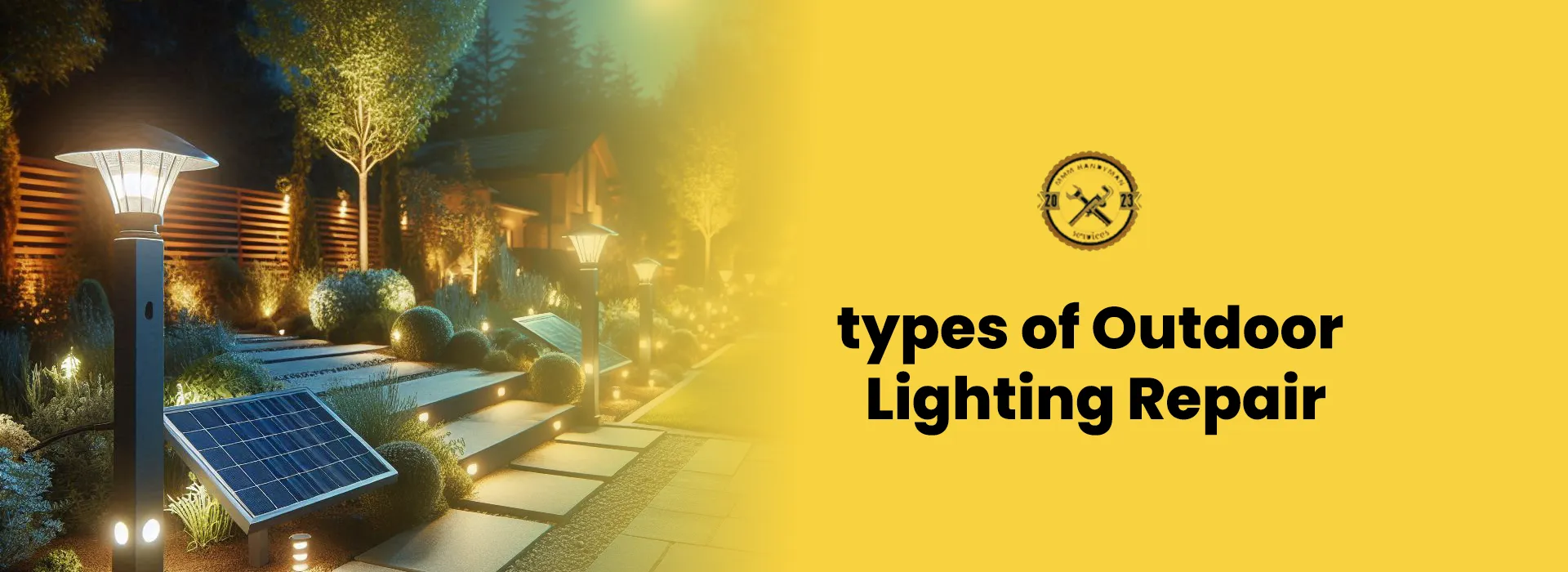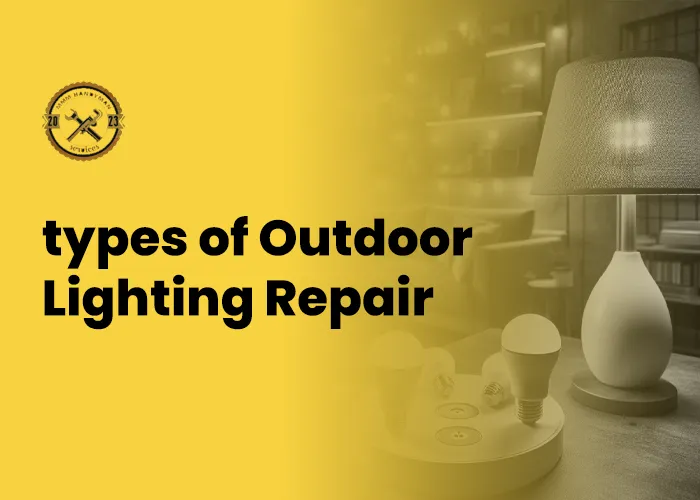
Imagine your home illuminated beautifully at night, with lights that highlight your garden and architecture. Outdoor lighting is not only practical but also adds charm and security to your home. However, like any other system, outdoor lighting can face issues over time. Knowing how to troubleshoot and fix common problems can save you time, effort, and money.This guide covers some of the most frequent problems in outdoor lighting systems and offers practical solutions. Let’s dive into these challenges and how to handle them!
Common Problems with Outdoor Lighting and Their Solutions
It helps to understand your outdoor lighting system, so you can diagnose and fix issues when they arise. Here are some common problems people encounter and their fixes:
- Burned-Out Bulbs
Burned-out bulbs are a frequent issue. Over time, bulbs can simply wear out and stop working, depending on their usage.
Solution: Identify the bulb that has burned out by checking each light individually. Once you find it, replace it with the correct type and wattage as specified by the fixture manufacturer. LED bulbs are an excellent choice as they last longer and are energy-efficient, which means fewer replacements over time.
- Flickering Lights
Flickering lights can be a nuisance and may indicate a more serious problem. They often flicker due to loose connections, faulty bulbs, or underlying electrical issues.
Solution: First, check if the bulb itself is faulty and replace it if necessary. If the problem persists, inspect for loose or corroded wires in the fixture and power source. Tighten any loose connections and replace any corroded parts. If flickering continues, it may be a more complex wiring issue, so consider consulting an electrician.
- Lights Not Turning On
Sometimes, your lights may not turn on at all. This could be due to a power outage, a tripped circuit breaker, or a problem within the fixture.
Solution: Start by checking the power source to ensure the bulb is receiving power. If the circuit breaker has tripped, reset it, and verify that the fixture is intact. If there are still issues, it may be necessary to replace the problematic component.
- Water Damage
Outdoor lights are exposed to the elements, and water damage can occur, especially during rainy seasons. Moisture can seep into fixtures, leading to short circuits or corrosion.
Solution: Regularly inspect your outdoor lights for water damage, particularly inside the fixture. Ensure all seals and gaskets are in good condition and properly installed. If water intrusion is a recurrent issue, consider investing in waterproof fixtures to protect your lighting system.
- Inconsistent Lighting
Inconsistent lighting, such as dimming or uneven brightness, is usually a sign of voltage drops, especially in larger setups.
Solution: Check the transformer to ensure it can handle the total wattage of your lights. Using thicker gauge wires can help reduce voltage drops over long distances. Alternatively, installing additional transformers can help distribute the load and maintain consistent brightness throughout your lighting system.
- Light Fixture Damage
Outdoor fixtures can be damaged over time due to weather, accidental impacts, or general wear and tear.
Solution: Regular maintenance is key. Inspect your outdoor lighting periodically for visible damage, such as cracks or broken components. Replace damaged parts promptly to keep the system working effectively
Types of Outdoor Lighting
Outdoor lighting comes in various styles, each serving a different purpose. Here are a few popular types:
– LED Landscape Lighting: These lights are energy-efficient and provide bright, long-lasting illumination. They’re great for highlighting pathways, gardens, and architectural features.
– Bistro String Lighting: Perfect for adding warmth and charm, string lights create a cozy ambiance for outdoor dining areas, patios, or decks.
– Permanent Trim Lights: Ideal for year-round use, these lights can outline your roof or windows and provide consistent, customizable lighting.
– Architectural Lighting: This type adds depth to your building, emphasizing its unique features and enhancing nighttime curb appeal.
– Premium Holiday Lighting: Designed to capture the festive spirit, these lights are durable, vibrant, and can add a dazzling display to your holiday decor
Why Choose Low-Voltage LED Lights?
Low-voltage LED lights are increasingly popular for outdoor lighting due to several benefits:
– Energy Efficiency: LED lights consume less power, reducing energy costs.
– Safety: With a low voltage of 12V, there’s a reduced risk of electric shock.
– Longevity: LED lights have longer lifespans and maintain their brightness for thousands of hours.
– Versatility: Available in various sizes and colors, they’re suitable for multiple applications, from pathways to architectural lighting.
FAQs
- How can I prevent water damage to my outdoor lights?
Regularly inspect your fixtures and ensure all seals are intact. If you find any moisture, dry it out immediately to prevent further damage.
- Why are some of my outdoor lights dimmer than others?
Dim lights could be due to an inadequate power supply or fluctuating voltage. In such cases, it’s best to consult a professional electrician for a thorough assessment.
- What should I do if my outdoor lights have corroded connections?
Try cleaning corroded connections with a wire brush and applying a corrosion inhibitor. If the problem persists, replacing the affected components may be necessary.
- How do I replace a burned-out bulb in my outdoor light fixture?
Turn off the power to the fixture, remove the old bulb, and install a new one of the same type and wattage. Make sure the bulb is securely in place before restoring power.
- What are some energy-efficient options for outdoor lighting?
LED lights and solar-powered fixtures are excellent options. They provide long lifespans and consume less energy, making them cost-effective choices for outdoor lighting.

